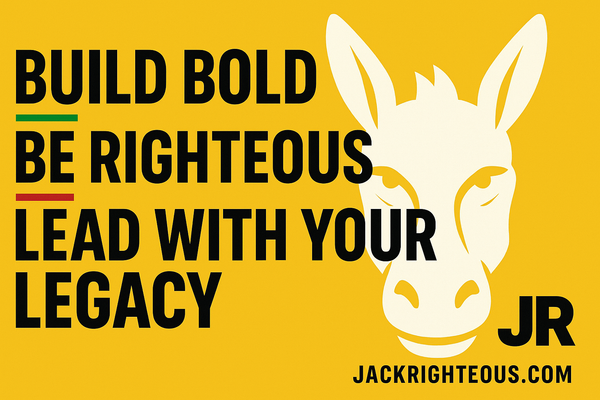AI Mood Board Guide for Visual Creators
AI Mood Board Guide: Visual Planning with Image Generation Tools
This guide introduces how to create a visual mood board using any AI image generation tool (such as Leonardo AI, Midjourney, or DALL·E). While optimized for Leonardo’s Flow State mode, this method is tool-agnostic — you can adapt it to whatever platform you’re using. The approach is modular and works across any musical, thematic, or artistic direction.
To begin building your own brand-ready system, visit:
➡️ https://jackrighteous.com/pages/build-your-brand-ai-business-growth
⚡️ Execution Context: Why This Guide Works (User Workflow Overview)
This guide helps you go beyond quick content drops. Instead of posting random AI videos daily, you’ll learn how to:
- Build a cohesive visual identity across your content
- Use prompt structure to explore creative variations
- Develop mood boards that double as public engagement funnels
- Train yourself on what makes AI content connect with real people
You may be starting with no plan — and that’s okay. But what this guide shows is how a structured process lets you:
- Build audience trust
- Refine your own creative direction
- Repurpose your visuals across platforms
Start where you are. Grow as you go. But make each visual mean something.
Step 1: Define Your Visual Tone
Before starting, clarify your project’s tone and identity. Use the following as input prompts for your Custom GPT or notebook:
Prompt Input Template:
Project Title:
Central Message (1-2 sentences):
Tone (e.g., bold, mystical, reflective):
Key Themes (3-5 words):
Faith / Cultural Anchors (if any):
Visual Identity (e.g., modern prophet, warrior poet):
Color Palette (primary tones):
Emotional Moods (3–5):
Step 2: Break the Song (or Story) Into Visual Moments
Break your content into 8–10 emotional or narrative beats.
Prompt Input Template:
Scene #:
Lyric / Line / Theme:
Emotion:
Visual Summary:
Proposed Prompt:
[Subject] + [Emotional Tone] + [Camera Style / Motion / Mood / Lighting]
Example:
Scene 3: “Fork inna di road…”
Emotion: Choice, pressure
Visual Summary: Jungle crossroads / stormy sky
Prompt: Torchbearer at jungle crossroads + contemplative + burning dusk tones + slow zoom in
Step 3: Build a Visual Modifier Vocabulary
Use these terms to control aesthetic and stylistic tone in your prompts (especially if using a tool like Leonardo AI):
-
Lighting Tags: Stormy, Candle Lit, Golden Hour, Mystical, Foggy
-
Vibe Tags: Concept Art, Surreal, Oil Paint, Sketch
-
Shot Types: Cinematic, Spiritual, Overhead, Close Up
-
Color Themes: Warm Tones, Earth Tones, Jet Black, Terracotta Teal
Customize your own list based on your brand identity or genre.
Step 4: Generate Mood Board Assets with Leonardo AI (Flow State)
1. Access Flow State
-
Go to LEONARDO AI
-
Click "AI Image Generation" → Flow State tab
2. Base Prompt + Modifiers
[Subject], [Environment], [Mood], [Camera Style], [Lighting]
Example:
Cinematic, prophet with torch, misty crossroads at night, wide-angle, fire glow
3. Stop Flow State Correctly
-
Click pause/stop (bottom right) before leaving the page
4. Save + Rename Images
As of now, Leonardo AI does not support renaming images directly inside folders or the image manager interface.
✅ How to Rename Images from Leonardo AI
Option 1: Download and Rename Locally
Click the image you want to rename → Hit Download (⬇️ icon) → On your computer, rename the file manually (e.g., Firelight_Crossroad_Prophet.jpg) → Upload to Canva, Pinterest, or your project tool.
Option 2: Use Descriptive Filenames at Save Time (if available)
If prompted before saving, name the file clearly before downloading.
Step 5: Create and Organize Your Pinterest Mood Board
1. Section Themes
- Symbolic Anchors – fire, crossroads, chains, vines
- Scene Environments – jungle, ruins, altar, cityscape
- Character Types – prophet, rebel, seeker, mystic
- Color + Texture Palettes – ash, gold, fog, thread
- Lighting Moods – torchlight, moonlight, glow haze
2. Upload to Pinterest
-
Create a new board (e.g., "Visual Mood Board - [Your Project Name]")
-
Upload pins with tags and descriptions
✅ Carousel Example: https://pin.it/4cQ9uoyZ4
✅ Collage Example: https://pin.it/6nX41DhOP
3. Optional Format (Canva)
- Use 1080x1920px vertical layout
- Add mood/theme labels
- Export and upload as polished pins
Don’t Use Pinterest? Start With One of These:
If Pinterest isn’t your go-to, here are real-world alternatives that work with the same strategy:
- Instagram Carousels – Showcase scenes or moods as swipable story sets. Great for Reels and outreach.
- Canva Share Links – Build branded mood boards with text overlays and share them privately or publicly.
- Notion Visual Gallery – Use gallery view to organize inspiration, prompts, and project art inside your creative hub.
- **AI Tool Folders (Leonardo, Midjourney, etc.) – Save and categorize your generated outputs inside folders for review, download, or future reuse.
- BandLab or Shopify Assets Folder – For music creators building visuals to match tracks or product launches, these double as embedded project galleries.
You can adapt the Pinterest layout and flow for any of these — just apply the same concept: theme, tone, clarity.
Step 6: Use Mood Boards to Build Brand and Business
Whether you’re building a content brand, a storytelling IP, or a music video strategy — mood boards let you:
- Show your audience your process
- Align creative collaborators
- Position yourself for Spotify pitches, visual campaigns, or product drops
This guide supports the workflow found at:
https://jackrighteous.com/pages/build-your-brand-ai-business-growth
Use it with your GPT to streamline creative growth.
Ready to Launch or Level Up Your AI Music Journey?
🔹 Start Here – The Suno AI Creator Guide:
https://jackrighteous.com/pages/suno-guide-getting-started
🔹 Learn to Brand with Sound – GET JACKED Into Suno Branding:
https://jackrighteous.com/pages/start-ai-music-branding
🔹 Unlock the Full Anthem Path – GET RIGHTEOUS System Access:
https://jackrighteous.com/pages/get-righteous-anthem-guide
(Requires one of the following:
– https://jackrighteous.com/products/get-jacked-full-pro-kit
– https://jackrighteous.com/products/get-jacked-pro-ai-music-kit
– https://jackrighteous.com/products/sanctuary-digital-download-support-the-album-build)
